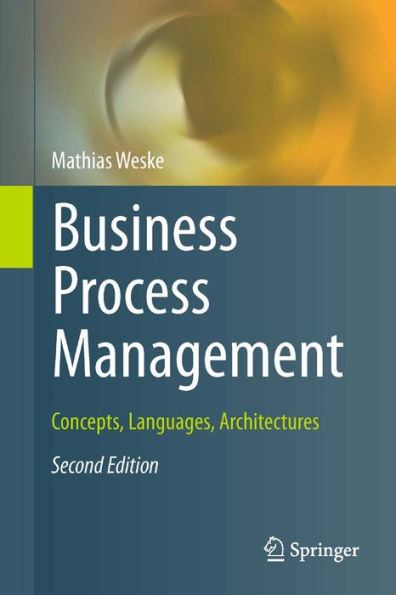After starting with a presentation of general foundations, process orchestrations and process choreographies are covered. Based on control flow patterns, concrete process languages are introduced in a concise manner, including Workflow nets, Event-driven Process Chains, Yet Another Workflow Language, and the Business Process Modeling Notation. The various stages during the design and implementation of process choreographies are discussed. Different soundness properties are investigated in a chapter on formal aspects of business processes. Finally, he investigates concrete architectures to enact business processes, including workflow management architectures, case handling architectures and service-oriented architectures. He also shows howstandards like SOAP, WSDL, and BPEL fit into the picture. This textbook is ideally suited for classes on business process management, information systems architecture, and workflow management. It is also valuable for project managers and IT professionals working in business process management, since it provides a vendor-independent view on the topic. The accompanying website www.bpm-book.com contains further information, such as links to references that are available online, exercises that offer the reader a deeper involvement with the topics addressed, and additional teaching material.
After starting with a presentation of general foundations, process orchestrations and process choreographies are covered. Based on control flow patterns, concrete process languages are introduced in a concise manner, including Workflow nets, Event-driven Process Chains, Yet Another Workflow Language, and the Business Process Modeling Notation. The various stages during the design and implementation of process choreographies are discussed. Different soundness properties are investigated in a chapter on formal aspects of business processes. Finally, he investigates concrete architectures to enact business processes, including workflow management architectures, case handling architectures and service-oriented architectures. He also shows howstandards like SOAP, WSDL, and BPEL fit into the picture. This textbook is ideally suited for classes on business process management, information systems architecture, and workflow management. It is also valuable for project managers and IT professionals working in business process management, since it provides a vendor-independent view on the topic. The accompanying website www.bpm-book.com contains further information, such as links to references that are available online, exercises that offer the reader a deeper involvement with the topics addressed, and additional teaching material.

Business Process Management: Concepts, Languages, Architectures

Business Process Management: Concepts, Languages, Architectures
eBook (2nd ed. 2012)
Related collections and offers

Product Details
| ISBN-13: | 9783642286162 |
|---|---|
| Publisher: | Springer-Verlag New York, LLC |
| Publication date: | 05/03/2012 |
| Sold by: | Barnes & Noble |
| Format: | eBook |
| File size: | 6 MB |
